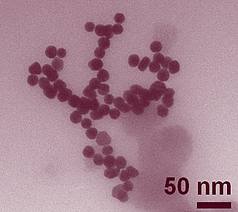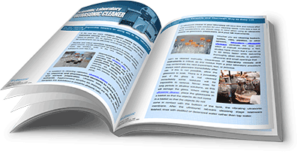Ultrasonic Nanoparticle Dispersion
Sonication in laboratory ultrasonic cleaners is a widely accepted process for the dispersion or separation of nanoparticles in liquids – that is breaking up nanomaterial agglomerates. It is an effective alternative to other dispersion methods such as rotor-stator homogenizers, piston homogenizers and wet milling. A number of factors should be considered when selecting ultrasonic equipment to break up agglomerates whether you use a solvent-based or aqueous suspension.
As an introduction you must keep in mind that the optimum performance settings of the ultrasonic equipment may vary depending on the agglomerates being dispersed. In other words if you are working with a variety of nanoparticles you should investigate equipment with adjustable operating parameters.
Here we provide some guidelines on ultrasonic equipment selection for nanoparticle dispersion.
Ultrasonic power:
In this case power refers to the ultrasonic power input into the bath. In this post we use the 3-quart capacity dual frequency 37/80 kHz Elmasonic P30H ultrasonic cleaner, one of the six P series with tank capacities to 7.5 gallons available from Tovatech. Its effective power is 120 or 100 watts depending on frequency. Peak power is 480 or 400 watts depending on frequency.
Again using the Elmasonic P series, users can adjust the ultrasonic power from 30 to 100% of the units’ effective power. This allows researchers to develop optimum nanoparticle dispersion procedures.
Some models of ultrasonic cleaners offer what is called a “pulse” mode. In the Elmasonic P series the manually activated pulse mode increases power approximately 20%. A pulse mode can be useful in dispersing certain nanoparticles.
Ultrasonic frequency:
This determines the size of cavitation bubbles to break up aggregated particles. Higher frequencies produce smaller bubbles and gentler cavitation. Dual frequency cleaners such as the P series that offer either 37 or 80 kHz and can automatically switch between the two every 30 seconds if desired, allow researchers to refine their dispersion procedures. For more on these two topics see our post on how to select frequency and power. It provides equipment examples in addition to the P series in this post.
Tank dimensions:
Lab work in nanoparticle dispersion is usually performed with samples placed in containers such as vials and beakers. Containers are suspended in holders fitted to an ultrasonic tank filled with water to which a surfactant can be added to increase the efficiency of cavitation.
Only a small portion of the sample container – such as one or two inches – need be immersed in the water, but containers should not touch the tank bottom. Ultrasonic energy passes through the container walls to act on the samples. Therefore the tank dimensions or volume can be determined based on the number of samples you expect you process at a time. Again referring to the P30H, internal tank dimensions are 9.4 x 5.4 x 3.9 inches deep.
Temperature control:
Ultrasonic nanoparticle de-agglomeration produces heat which may not be desirable when dispersing nanoparticles. For example, a continually operating unit can raise liquid temperature as high as 60⁰C depending on the model. If heat is detrimental to nanoparticle dispersion consider using ice water in the tank or fitting the unit with a cooling coil available from Tovatech.
We hope this post is useful in helping you get a handle on equipment selection for sonic dispersion of nanoparticles. Please contact the ultrasonic equipment professionals at Tovatech for a deeper discussion on your needs or download a copy of our 10 critical factors to consider when selecting this equipment.

